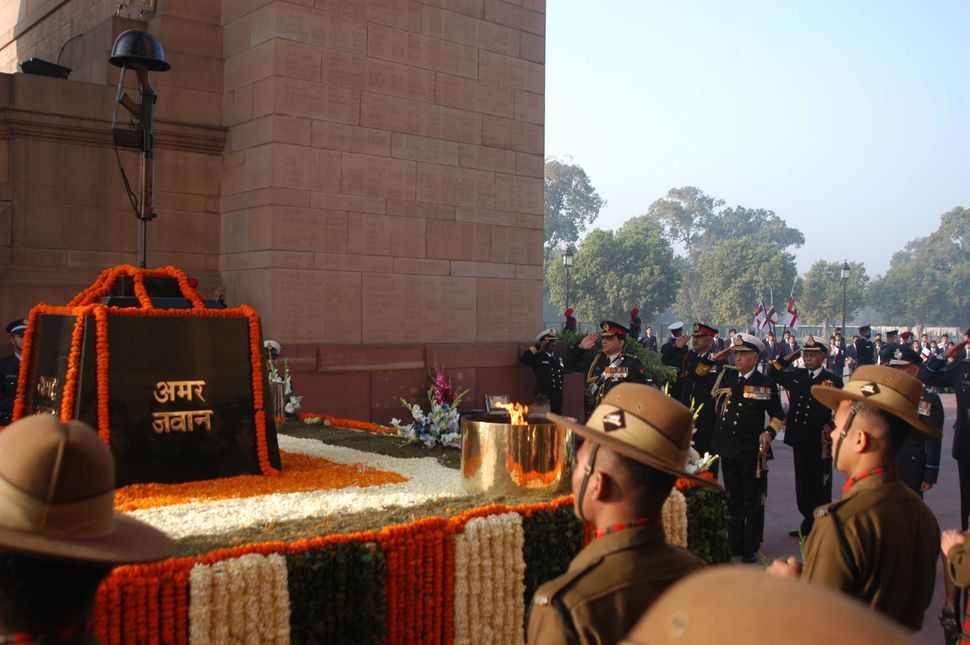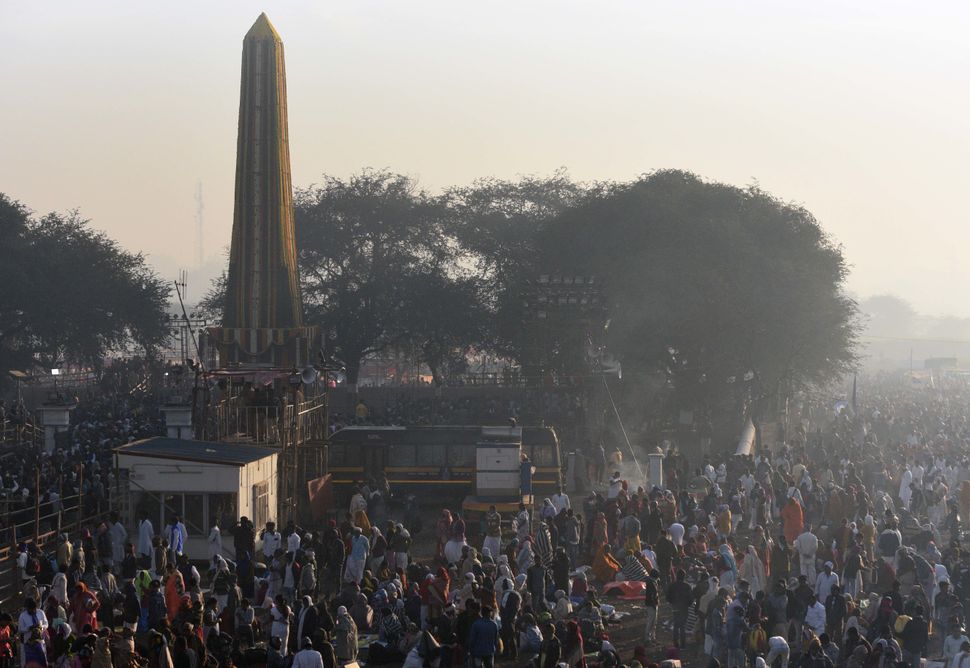
When Prime Minister Narendra Modi inaugurated the National War Memorial in New Delhi last month, he used the opportunity to tell the country that the Congress had failed to build the structure despite the proposal being mooted as early as the 1960s. Critics were quick to clap back, condemning the prime minister for making a “political speech” which didn’t do justice to the solemnity the occasion called for.
Just as this debate was going on, there emerged the very real danger of India and Pakistan heading to war once again. While the two countries have stepped back from that brink now, it is worth considering two questions—one, does war need to be memorialised at all? Two, what does the privileging of one ‘national’ history mean for other, lesser known histories in a country like India?
While the National War Memorial, situated in the heart of New Delhi, attempts to conceptualise the Indian nation as the sole hegemonic force, memorials and experiences of wars such as Bhima Koregaon claim a different subjective position. They recount India’s many histories, which are often at variance with the ‘national’ history of war.

Neighbour to India Gate
The National War Memorial is not the first structure erected to commemorate war in India. In 1931, an All India War Memorial was inaugurated in the centre of New Delhi by Lord Irwin to commemorate the lives of Indian soldiers who fought under the Imperial British Army in the First World War. The memorial, visualised as an expression of imperial unity, was designed by Edwin Lutyens in the form of a triumphal arch denoting a passageway, inspired by Roman architecture. Decorated with carvings and dotted reliefs, the structure was used to commemorate victories of generals and significant public events such as the construction of a bridge or founding of a new colony. The design was suggestive of Enlightenment ideals as well—rule of law, order and progress. But here, it was couched in the logic of a Colonial Empire. Indians were not welcome visitors unless they were government officers, clerks or others who served under the colonial government.
After India became independent, the memorial was renamed India Gate. Crowds descended, and it was transformed into a symbol for freedom and national unity. While there were demands from various corners through the 1950s and 60s that India should have its own war memorial, it was only in 1972 that Indira Gandhi inaugurated Amar Jawan Jyoti to mark the 1971 India- Pakistan war.

Beyond the main arch of the India Gate stands the memorial to fallen soldiers— an upturned rifle capped by a soldier’s helmet, surrounded by flames on four corners. The dedication to the tomb of an unknown soldier evokes an aura of universality but this is dispelled as the war between India and Pakistan still reminds one of the communal divide that Partition had wrought in the subcontinent.
Apart from the inscriptions on the structure, an interesting feature of monuments is that it attracts people to it, and in the process, allows itself to be interpreted and reinterpreted by its visitors. The buzzing traffic around India Gate and voices of vendors and passersby fill the space with a complex energy. While the official history remains confined to the actual monument, the rest of it extends around the surrounding landscape of garden, trees and pathways.
India Gate has also become a marker of dissent through numerous protests and candlelight vigils against the Indian state. Like the history of war, which is marked by strength, frailty and horror, the monuments here also represent a complex layering of histories which subverts any dominant construction.
The National War Memorial, a few steps away from India Gate, has not been erected merely to mark a war or a soldier who lost his life. It is to carve out a separate sphere for national renewal against the onslaught of postcolonial anxieties.
This memorial is a gated structure, bearing a complex circular design of alleys and pathways. The circular railing has brick-like carved forms with names of soldiers embossed on it. The semi-sphere at the base has murals with images of soldiers and battles, and at the centre stands an obelisk with the Ashoka Chakra on top. Even though the circular design adds a certain mysticism to the atmosphere, the well-planned display of information and ordered arrangement of values—bravery, sacrifice and immortality—create an ordered, rational and chronological history of war.
In depicting the different wars India has fought, the visual convention it follows is that of the Western academic rule of perspective and realism. During the Protestant Reformation, in 16th century Europe, the Catholic Church had commissioned artists who used this style to help restore people’s faith in Christianity. Here, this style attempts to restore people’s faith in war and the nation.

Who makes up the nation?
Overall, the memorial, with its curatorial design, seems to aspire to become an institution particularly concerned about a ‘national’ war history. If one were to extend the metaphor of ‘national’ to the whole nation, one would realise that there are other war memorials which would complicate the privileging of national history over other lesser known histories of wars.
One of them is the memorial at Bhima Koregaon near Pune. An obelisk in the form of war memorial was commissioned by the East India Company after their victory in the third Anglo Maratha War (1817-18) to honour those who died fighting in the battle. Twenty-two of the 49 names inscribed on the memorial are of Mahars who fought with English forces to win the battle against Peshwas. Today, the memorial is a destination for Dalits in India to not only pay respect to the fallen soldiers, but also to mark a break with the mainstream narrative which constructs Dalit history through the lens of victimhood.
“While the National War Memorial recounts the unity of the nation, the memorial at Bhima Koregaon exposes its fracture.”
Dalits are asked to show their faith in the Indian nation by forgetting the history of which they were a part. In return, they question the dominant construction of nation and nationalism and create a history of strength against untouchability and caste discriminations.
The memorial has achieved even more significance after the violent clashes between Dalits and the dominant Marathas on 1 January 2018, the 200th anniversary of the battle.
While the National War Memorial recounts the unity of the nation, the memorial at Bhima Koregaon exposes its fracture, i.e. India’s caste system. Bhima Koregaon critiques the Hegelian position that sees nation-state as the ethical culmination where conflicts end and shows its internal contradictions. In fact, it gives weight to the argument that the nation’s democratic and equal claims are mythical, and while doing so, points at its history of exclusion.
This history is complicated further when we move to Subedar Ninglam Tangkhul, a Naga nonagenarian who fought in the battle of Kohima in 1944.
“I was given 200 rounds of ammunition, a rifle and water can. The British told us to fight, we fought,” he told the Hindustan Times in an interview in 2017.
Years later, when he became part of the Indian Army, he had to battle Naga insurgents fighting for a separate nation. His matter-of-fact summing up of the situation, in the same interview, points to how the allegiances of soldiers is not monolithic, and may shift according to who controls an Army.
“I am a soldier. In a situation where I am likely to be killed, I will kill,” he said.
The author is a research assistant in the Visual Studies department at School of Arts and Aesthetics, Jawaharlal Nehru University, New Delhi.